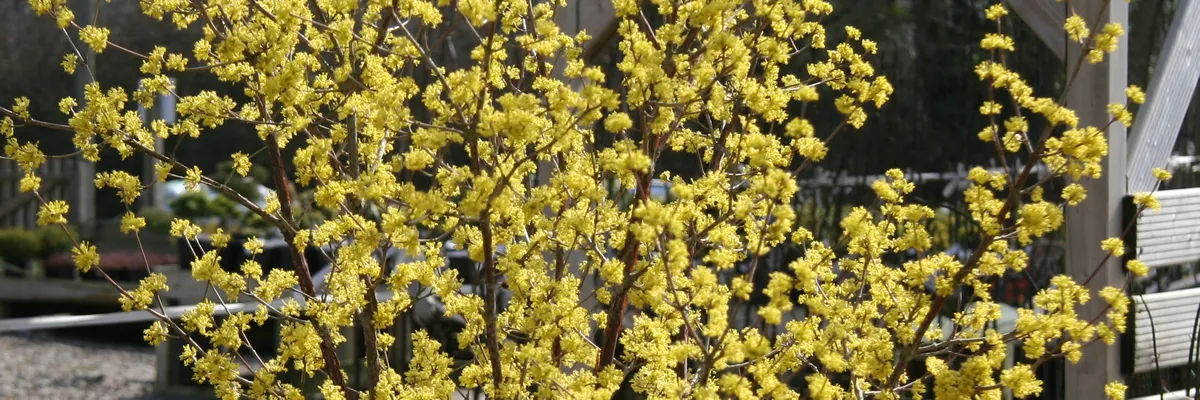It’s still winter when the CORNUS officinalis (Japanese cornelian cherry), a very hardy and easy-to-grow plant, comes to wake up our gardens. Indeed, the Japanese dogwood develops a spectacular flowering in January and February. It is also one of the earliest flowering dogwoods. Afterward, red fruits, edible and rich in vitamin C, follow the blooms and are a treat for birds. In autumn, its green foliage becomes flamboyant (see photo below). Then, when the leaves have fallen, you will discover its very interesting bark which exfoliates.
How to grow CORNUS officinalis (Japanese cornelian cherry)
CORNUS officinalis will thrive in any type of soil. It resists drought well. You can plant it in
- a pot or container, on a terrace or a balcony or even
- simply in the ground, in a bed or in a hedge.
Find a spot for this deciduous shrub in sun or partial shade. It is perfectly resistant to temperatures below –20 °C. In addition, you can prune it at will, if necessary. In conclusion, it is an easy plant to grow.
As a result, it is perfectly suited to beginners and experienced gardeners.
History and Origin
CORNUS officinalis is also called the Japanese cornel.
It is naturally present in China, Japan and Korea. It is used there as a food and medicinal plant.
Furthermore, this plant contains oleanolic acid and ursolic acid. The latter showed protection on the auditory cells.
Fruits contain protective substances on beta cells in vitro. They can control postprandial hyperglycemia.
Cornus officinalis dogwood juice is rich in potassium, calcium, sodium, iron, zinc, manganese and copper. Their levels are higher than those found in apple, pear or plum juice.





Leave a Reply